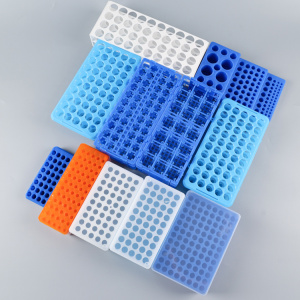Basic tips for the cryopreservation of cell cultures
Basic tips for the cryopreservation of cell cultures
Cells continue their metabolism during normal growth activities, which requires the participation of various proteases. When the temperature drops below -70 °C, proteases stop working. Therefore, in an environment with extremely low temperatures, cells can stop their metabolic activities and enter a dormant state that allows long-term storage.
1. Experimental materials
Base material:
Basic culture medium
Serum (conventional FBS/NBS)
Ultrapure workbench
Sterile dimethyl sulfoxide (DMSO)
Sterile PBS phosphate buffer salt solution
Pipetting gun
Electric pipetting gun
Preparation of the experiments
a) Preparation of the freezing solution:
General cells: 55% basal medium + 40% bovine serum (FBS/NBS) + 5% DMSO
Vital cells: 90% bovine serum (FBS/NBS) + 10% DMSO
Aliquot the prepared cryopreservation solution into a 15 ml centrifuge tube [NEST] and store at 4 °C for later use.
(b) Preparation of cells to be frozen:
Before freezing the cells, select cells with good growth status and in the logarithmic growth phase and replace them with fresh medium 12-24 hours before freezing to maintain cell condition.
2. Experimental procedure
1. Observe the density of the cells to be frozen, which is about 80%~90%. Use a pipette gun to aspirate the old medium, add sterile PBS to wash the cells 1-2 times, and remove the remaining medium in the culture environment.
2. Add an appropriate amount of trypsin or digestive juice to allow the trypsin to enter the cells, and place them in the incubator for digestion. Observe the condition of the cells under the microscope: the cytoplasm is retracting and the cells are no longer connected into sheets. At this point, add the stop solution to stop the digestion process.
3. Gently bubble the cells with a tip to form a cell suspension and centrifuge the cell suspension at 1000 rpm for 3-5 minutes.
Discard the supernatant, add an appropriate amount of freezing solution, and gently pipette to make the cells count uniformly. Adjust the cell density with cryopreservation medium to make the final density 5×106/mL~1×107/mL.
4. Use a pipette gun to separate the cryogenic tubes according to the expected capacity, and use an automatic capping machine to cap and seal.
5. The standard cryopreservation program is a cooling rate of -1°C to -2°C/min, and the cells to be frozen can be gradually frozen according to the following steps: room temperature → 4°C (20min) → -20°C (30min) → -80°C °C (overnight) → long-term storage in liquid nitrogen.
It can also be stored directly in a freezer at -80°C overnight and then transferred to liquid nitrogen for storage.
Yongyue Medical is a high-tech enterprise specializing in R&D, production and sales of biomedical consumables. Pipette tips,pipettes,pcr plate,cell culture products and other biological laboratory consumables. Yongyue Medical is worthy of your trust and choice! Welcome to consult!





